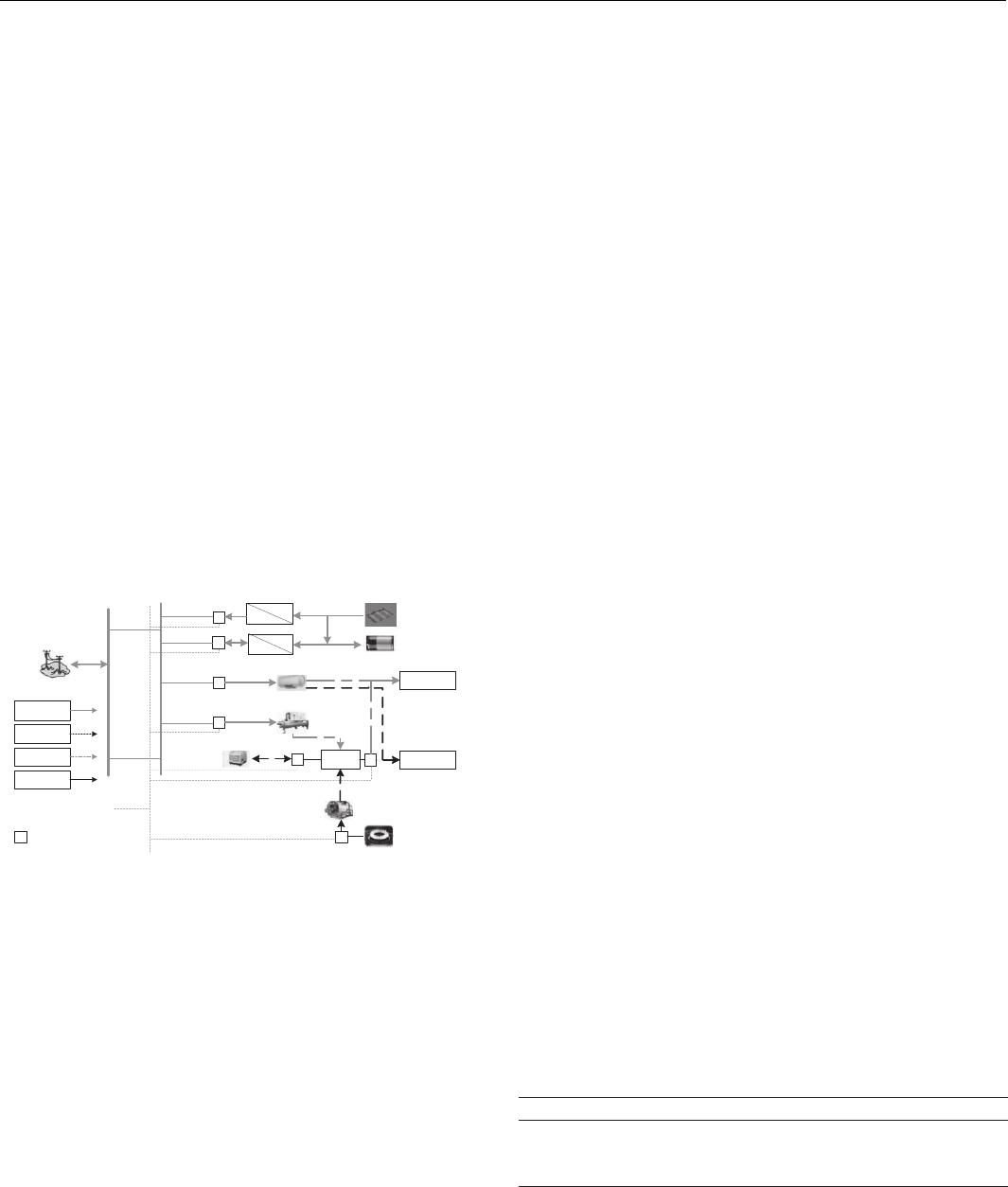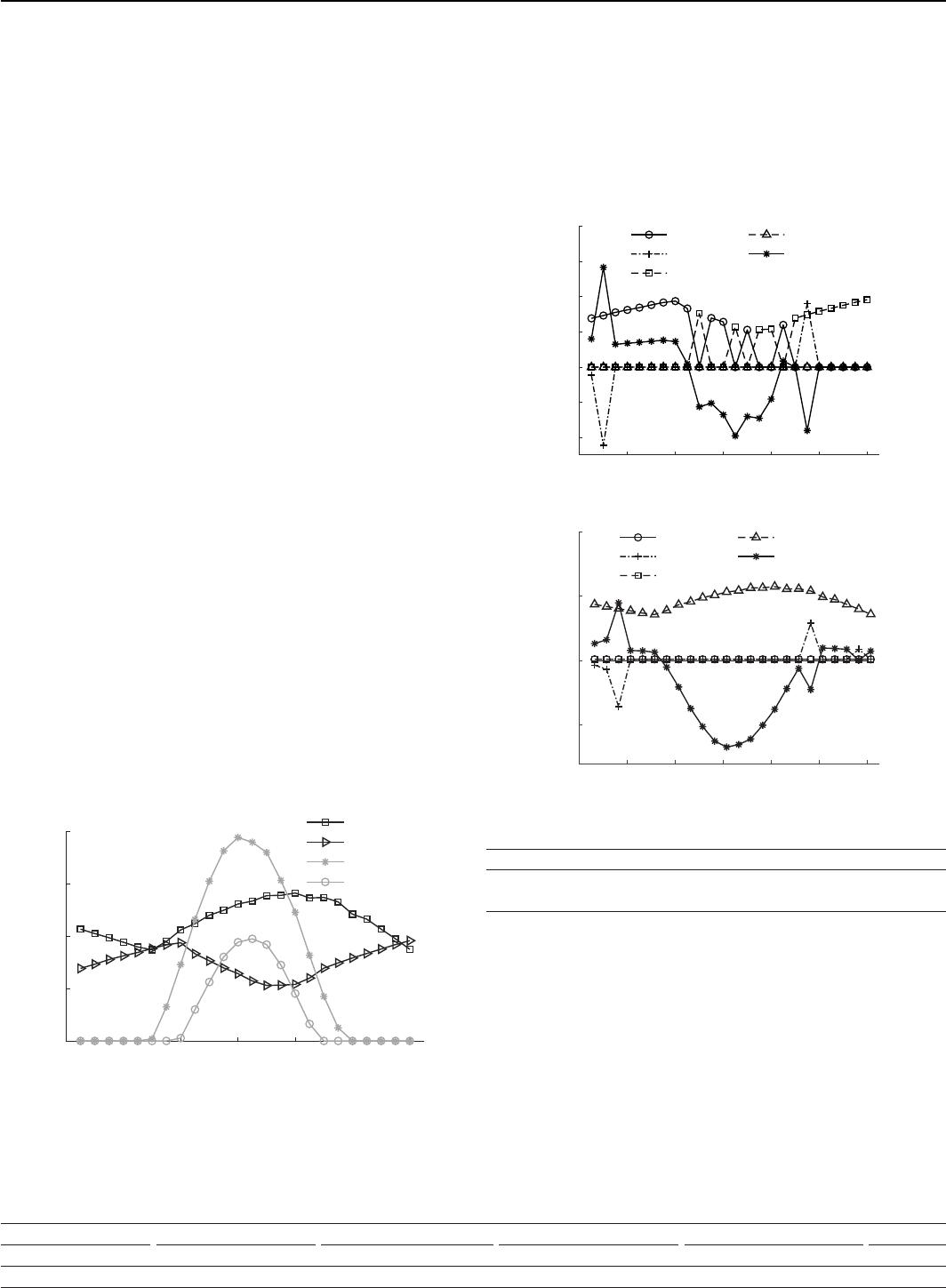
2022 年第 6 期
信息与电脑
China Computer & Communication
计算机工程应用技术
“双碳”目标下小型综合能源系统优化运行
陈禹含 1 黄芳辰 2 卢闻州 1
(1. 江南大学 物联网工程学院,江苏 无锡 214122;2. 国网江苏省电力有限公司仪征市供电分公司,
江苏 仪征 211400)
摘 要:为实现国家碳达峰、碳中和目标,推动我国绿色建筑的发展,文章设计了含光伏发电、天然气供能和储能设
备的小型综合能源系统并进行建模。模型考虑到设备配置优化、可再生能源的不确定性、季节和日内的运行变化,引入
江苏省仪征市某单体别墅建筑算例,以经济低碳为目标,采用粒子群算法求解。最后通过算例验证了所提模型和策略具
有经济性和低碳性,为建筑能源系统低碳化转型提供了新思路。
关键词:小型综合能源系统;低碳;粒子群算法;优化运行;可再生能源
中图分类号:TM732 文献标识码:A 文章编号:1003-9767(2022)06-020-04
Optimal Operation of Small Integrated Energy System Under the Goal of
"Double Carbon"
CHEN Yuhan1, HUANG Fangchen2, LU Wenzhou1
(1. School of Internet of Things Engineering, Jiangnan University, Wuxi Jiangsu 214122, China;
2. State Grid Yizheng Power Supply Branch Company, Yizheng Jiangsu 211400, China)
Abstract: In order to achieve the national "double carbon" goal of carbon peaking and carbon neutrality, and to promote the
development of green buildings in China, a small integrated energy system including photovoltaic power generation, natural gas
energy supply, and energy storage equipment is designed and modeled. The model takes into account the optimization of equipment
configuration, the uncertainty of renewable energy, the seasonal and intraday operating changes, taking the single villa building
in Yizheng City as an example, aiming at economical and low-carbon, using particle swarm algorithm to solve. And verified by
the example that the proposed model and strategy are economical and low-carbon, and provide a new idea for the low-carbon
transformation of the building energy system.
Keywords: small integrated energy system; low-carbon; particle swarm optimization algorithm; optimal operation; renewable energy
0 引言
作为碳排放量最大的国家,中国的碳排放量将显著影响
全球减排目标的实现。国家主席习近平在第七十五届联合国
大会上宣布,中国将提高国家自主贡献力度,采取更加有力
的政策和措施,二氧化碳排放力争于 2030 年前达到峰值,
努力争取 2060 年前实现碳中和 [1]。要实现碳达峰、碳中和的
“双碳”目标,需要建设清洁低碳、安全高效的能源体系,
其中建筑运行耗能而产生的碳排放量约占排放总量的 28%,
建筑能源体系的转变尤为重要 [2-3]。综合能源系统规划是构
建城市建筑低碳化体系中不可缺少的环节,可以根据用户负
荷需求来合理地利用和转换能源,多能互补,提高能源的利
用率,节能减排 [4-5]。
目前,国内建设的综合能源示范项目主要应用于酒店、
办公楼、
工业园区等大型场所,
这类系统缺乏有效的设计方法,
各主要单元性能之间相互制约,建多用少,效益不佳 [6-7]。而
以小功率动力设备为核心的家用或商用小型综合能源系统架
构简洁、耦合关系简单、前期投入资金少、面向受众广泛,逐
步成为新的研究热点。李晟云 [8] 构建了包含 10 kW 光伏发电
系统、
3 k W·h 储能系统的户用综合能源系统,
能够以
“自发自用,
余电上网”模式满足居民电负荷需求。任洪波 [9] 等人通过调
节家用能源系统中小型蓄电池的充放电时段,既节省了电费,
又对电网起到削峰填谷的作用。上述两种方法并不包含对冷热
基金项目:国家自然科学基金项目(项目编号:62101215)。
作者简介:陈禹含 (1997—),女,吉林长春人,硕士研究生。研究方向:综合能源系统优化运行。



 VIP
VIP VIP
VIP VIP
VIP VIP
VIP VIP
VIP VIP
VIP VIP
VIP VIP
VIP VIP
VIP VIP
VIP